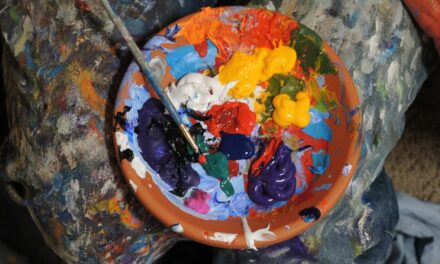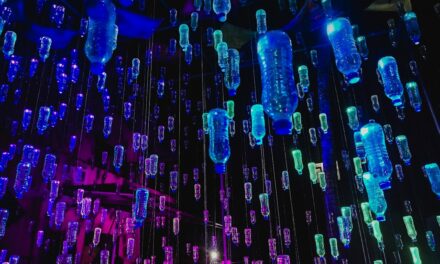Colour temperature is a fundamental concept in the realm of art, influencing not only the aesthetic appeal of a piece but also the emotional resonance it carries. At its core, colour temperature refers to the warmth or coolness of a colour, typically measured in degrees Kelvin. Warm colours, such as reds, oranges, and yellows, evoke feelings of warmth and energy, while cool colours like blues, greens, and purples tend to convey calmness and serenity.
This dichotomy is not merely a matter of personal preference; it is deeply rooted in the way we perceive light and its effects on our surroundings. In practical terms, understanding colour temperature shifts involves recognising how light interacts with objects and how these interactions can alter our perception of colour. For instance, a landscape bathed in the golden light of sunset will appear markedly different from the same scene under the cool light of dawn.
Artists can manipulate these shifts to create a sense of time, mood, and atmosphere within their work. By mastering the subtleties of colour temperature, artists can enhance their ability to communicate complex emotions and narratives through their chosen medium.
Summary
- Understanding color temperature shifts is essential for creating depth and focus in photography and cinematography.
- Color temperature shifts can be used to create depth by manipulating warm and cool tones to add dimension to an image or scene.
- Utilising color temperature shifts can help to draw focus to specific elements within a composition, guiding the viewer’s eye.
- The psychology of color temperature shifts plays a crucial role in evoking emotions and setting the mood in visual storytelling.
- Practical tips for implementing color temperature shifts include using gels, adjusting white balance, and experimenting with different light sources.
Using Color Temperature Shifts to Create Depth
Creating Depth through Colour Contrast
One of the most effective ways to utilise colour temperature shifts is to create a sense of depth within a composition. By strategically placing warm and cool colours in relation to one another, artists can guide the viewer’s eye through the artwork, establishing a three-dimensional quality on a two-dimensional surface. For example, warm colours tend to advance towards the viewer, while cool colours recede into the background.
Applications in Landscape and Still Life Painting
This principle can be observed in many landscape paintings where foreground elements are rendered in vibrant warm hues, while distant mountains or skies are depicted in cooler tones. Moreover, the interplay between warm and cool colours can also enhance the illusion of space. In a still life arrangement, an artist might use warmer tones for objects that are closer to the viewer, while employing cooler shades for those further away.
Enhancing the Viewer’s Experience
This technique not only adds depth but also creates a more immersive experience for the audience. The careful balance of colour temperature can transform a flat image into a dynamic scene that invites exploration and engagement.
Using Color Temperature Shifts to Create Focus
In addition to creating depth, colour temperature shifts can be employed to direct focus within an artwork. By contrasting warm and cool colours, artists can draw attention to specific elements or areas of their composition. For instance, a figure painted in warm tones against a backdrop of cooler shades will naturally attract the viewer’s gaze.
This technique is particularly effective in portraiture, where the subject’s face can be highlighted through the use of warmer skin tones set against cooler surroundings. Furthermore, colour temperature can also be used to evoke specific emotions or reactions from the viewer. A warm focal point may suggest vitality or warmth, while a cooler area might evoke feelings of detachment or introspection.
By manipulating these shifts intentionally, artists can create a visual hierarchy that guides the viewer’s emotional journey through the piece. This strategic use of colour not only enhances the overall composition but also deepens the narrative impact of the artwork.
The Psychology of Color Temperature Shifts
The psychological implications of colour temperature shifts are profound and multifaceted. Warm colours are often associated with feelings of comfort, excitement, and energy, while cool colours tend to evoke calmness, sadness, or contemplation. Understanding these associations allows artists to tap into the emotional responses elicited by their work.
For instance, an artist aiming to convey a sense of joy might employ vibrant warm hues, whereas one seeking to express melancholy might lean towards cooler tones. Moreover, cultural contexts play a significant role in how colour is perceived. In some cultures, red may signify luck and prosperity, while in others it could represent danger or warning.
Artists must consider these cultural nuances when employing colour temperature shifts in their work. By being mindful of both psychological and cultural associations with colour, artists can create more resonant and impactful pieces that speak to a diverse audience.
Practical Tips for Implementing Color Temperature Shifts
Implementing colour temperature shifts effectively requires both practice and intention. One practical tip for artists is to begin with a limited palette that includes both warm and cool colours. This approach encourages experimentation and helps artists develop an intuitive understanding of how different colours interact with one another.
Mixing warm and cool tones can yield unexpected results that enhance depth and focus within a composition. Another useful technique is to observe natural light conditions throughout the day. Artists should take note of how sunlight changes from warm to cool as it moves across the sky.
By studying these shifts in real-time, artists can better replicate them in their work. Additionally, creating studies or sketches that focus solely on colour temperature can help artists refine their skills without the pressure of completing a final piece.
Common Mistakes to Avoid When Using Color Temperature Shifts
While colour temperature shifts can greatly enhance an artwork, there are common pitfalls that artists should be wary of. One frequent mistake is overusing warm or cool colours without considering balance. An artwork dominated by overly warm hues may feel chaotic or overwhelming, while one that relies too heavily on cool tones might come across as flat or lifeless.
Striking a harmonious balance between warm and cool colours is essential for creating depth and focus. Another common error is neglecting the context in which colours are placed. An artist may choose vibrant warm colours for a subject but fail to consider how they interact with surrounding elements.
This oversight can lead to disjointed compositions that lack cohesion. To avoid this mistake, artists should consistently step back from their work to assess how colour temperature shifts contribute to the overall harmony and narrative of the piece.
Case Studies: Successful Use of Color Temperature Shifts
Examining successful case studies can provide valuable insights into the effective use of colour temperature shifts in art. One notable example is Claude Monet’s “Impression, Sunrise,” where he masterfully employs warm oranges and yellows against cooler blues to depict the early morning light reflecting on water. The contrast not only creates depth but also evokes a sense of tranquillity and fleeting beauty that characterises Impressionism.
Another compelling case study is Vincent van Gogh’s “Starry Night,” where he uses swirling cool blues and vibrant yellows to create an emotional landscape that resonates with viewers on multiple levels. The juxtaposition of warm stars against a cool night sky draws attention to the celestial elements while simultaneously conveying a sense of movement and emotion. These examples illustrate how colour temperature shifts can be harnessed to create powerful visual narratives that transcend time and culture.
Experimenting with Color Temperature Shifts: Pushing the Boundaries
Finally, artists are encouraged to experiment with colour temperature shifts as a means of pushing creative boundaries. This experimentation might involve unconventional combinations or unexpected contrasts that challenge traditional notions of colour harmony. By stepping outside their comfort zones, artists can discover new ways to express their ideas and emotions through colour.
Additionally, incorporating mixed media or digital techniques can further expand possibilities for exploring colour temperature shifts. Artists might blend traditional painting methods with digital tools to create dynamic compositions that play with light and colour in innovative ways. Ultimately, embracing experimentation allows artists not only to refine their skills but also to develop a unique voice that resonates with contemporary audiences.
In conclusion, understanding and utilising colour temperature shifts is an essential aspect of artistic practice that can significantly enhance depth, focus, and emotional impact within artworks. By mastering this concept and avoiding common pitfalls, artists can create compelling pieces that engage viewers on multiple levels while pushing the boundaries of their creative expression.
In a recent article on Colours of the Soul, the author delves into the emotional impact of different hues and shades. This exploration of the psychological effects of colour ties in perfectly with the concept of colour temperature shifts discussed in the article “Color Temperature Shifts: Creating Depth and Focus”. By understanding how colours can evoke certain emotions and moods, artists can use this knowledge to enhance the depth and focus of their work. The relationship between colour temperature shifts and emotional responses adds another layer of complexity to the art-making process, allowing artists to create more impactful and meaningful pieces.
FAQs
What is color temperature shift?
Color temperature shift refers to the change in the perceived warmth or coolness of light in an image or scene. It is measured in Kelvin and can be adjusted to create different moods and effects in photography and cinematography.
How can color temperature shifts create depth and focus?
By adjusting the color temperature, photographers and cinematographers can manipulate the visual perception of depth and focus in an image. Warmer tones tend to appear closer and more intimate, while cooler tones can create a sense of distance and spaciousness.
What are some common techniques for using color temperature shifts?
Common techniques for using color temperature shifts include using warmer tones to draw attention to a specific subject or area of the image, and using cooler tones to create a sense of distance or to evoke a specific mood or atmosphere.
What are some practical applications of color temperature shifts in photography and cinematography?
In photography, color temperature shifts can be used to enhance the mood and atmosphere of a scene, create visual interest, and draw attention to specific elements. In cinematography, color temperature shifts can be used to convey emotion, establish a sense of time and place, and guide the viewer’s focus within a frame.
What are some tools and techniques for adjusting color temperature shifts?
Tools for adjusting color temperature shifts include white balance settings on cameras, color gels and filters, and post-processing software such as Adobe Lightroom and Photoshop. Techniques for adjusting color temperature shifts include using natural and artificial light sources, manipulating white balance settings, and applying color grading effects in post-production.


